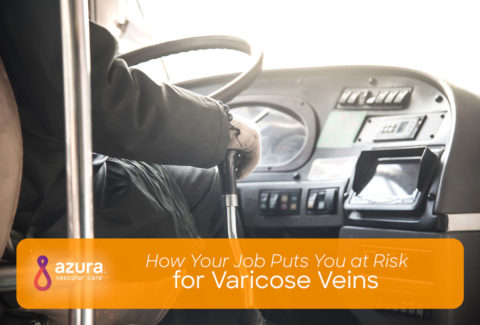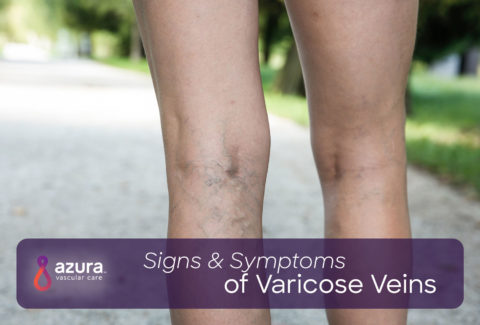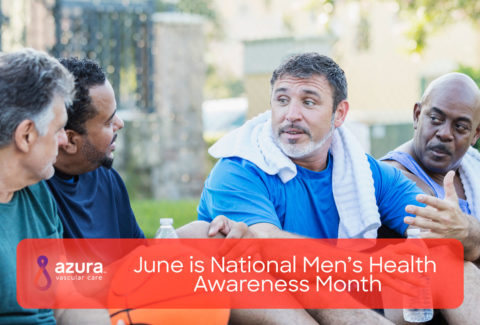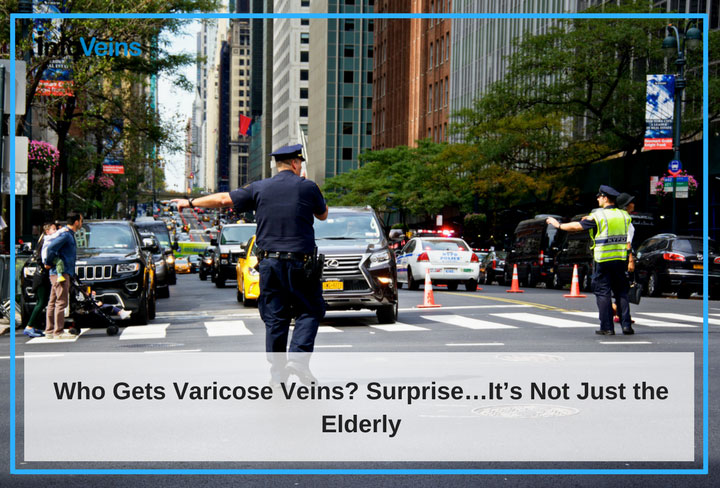
I know what you’re thinking: “I can’t possibly have varicose veins. I’m too young.”
But the truth is, you can have varicose veins at any age. Varicose veins are a common medical condition affecting about 30% of adults.i So if it isn’t just a problem for the elderly, then who is at risk for getting varicose veins?
Understanding Varicose Veins
Veins are the blood vessels that carry blood back to the heart. There are valves inside the veins that open and close to propel blood to flow back towards the heart. When these valves fail, or become dysfunctional, they do not open and close in the normal manner. This dysfunction allows blood intended to flow towards the heart to flow backward and pool, particularly in the lower extremities. This backflow and pooling of blood can result in the formation of varicose veins.
Varicose veins stretch the vein walls, which may already be weak, and then the veins will appear twisted and blue, just under the skin.
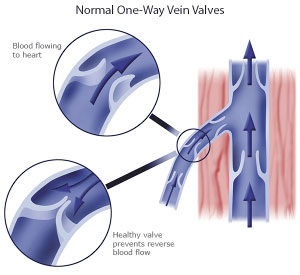
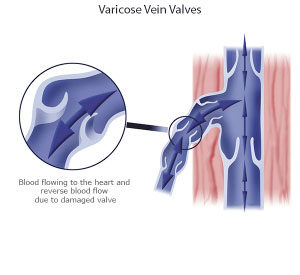
Why Are Varicose Veins Usually On the Legs?
Varicose veins are more common on the legs because veins are moving the blood up to your heart, against gravity, and leaky valves and weak walls can make it even harder to keep the blood moving.ii
So If It’s Not Just the Elderly, Who Does Get Varicose Veins?
The common misconception that only the elderly get varicose veins makes a lot of sense, because as we get older, our veins and valves get older, too, which means they can become weaker.
But the truth is, even a woman in her 20’s can have varicose veins. Certain people are more likely to get varicose veins, and age is just one factor. Here are the other groups of people who can be susceptible to varicose veins:
- Men and women over 40– About 22 million women between the ages of 40 and 80 years have varicose veins. Female hormones are thought to play a role in this. While they are more at risk, in reality, women are not the only ones who get varicose veins.iiiAmong men in this same age range of 40 to 80 years, 11 million have varicose veins.iii
- Women on hormone medication – Women who take birth control pills or hormone replacement therapy, which is sometimes prescribed to help with menopause symptoms, have an increased risk for varicose veins.iv
- People with a strong family history – If other members of your family have varicose veins, you are likely to get them too.iv This is because leaky valves are thought to be inherited.
- People who are overweight or obese – Increased weight puts additional strain on the valves and vein walls and increases the chance that varicose veins will develop.v
- Anyone with a history of a blood clot or damage to the vein – Any damage to a vein, whether from trauma or the presence of a blood clot, can harm the valves and vein walls and make the vein more likely to turn into a varicose vein.iii
- People with sedentary jobs – If you have a desk job that requires you to sit for long periods of time, you may develop varicose veins. The muscles of the legs play an important role in moving blood forward, but when we sit or stand for long periods of time, we prevent the muscles from helping move the blood against gravity.vi
- Standing workers – Restaurant workers, teachers, flight attendants and mail carriers are just a few of the professions that involve standing for long periods of time. Just like with sitting, standing for a long time can place stress on the veins, increasing the likelihood of varicose veins developing.vi
- Pregnant women – During pregnancy, the developing fetus rests on the veins in the lower abdomen, which can increase the amount of blood pooling in the legs. Typically, pregnancy-related varicose veins tend to go away after the baby is born.iv
Even if you don’t belong to any of these high risk groups, there are some varicose vein risk factors that you should be aware of because you still may develop varicose veins. Some women become self-conscious and think varicose veins are unattractive or unsightly. But there actually are complications beyond just the cosmetics of varicose veins that you should be aware of.
If you have any of the following leg symptoms, they could be related to your varicose veins and you should talk to your doctor:
- swelling in your feet, ankles or whole leg
- a feeling of heaviness or discomfort in your legs
- a throbbing or burning in your legs
- itching around your veins
- skin changes such as hardening or a change in the normal color
RELATED: 22 Things You Need to Know about Varicose Veins and Spider Veins
Have you ever wondered if you have varicose veins, but always just assumed you were too young? If you suspect you may have varicose veins and you have any of the above symptoms, you should talk to your doctor. There are varicose veins treatments that can help – there is relief out there…you don’t have to suffer from your varicose veins.
Sources:
iLin, F., Zhang, S., Sun, Y., Ren, S., Liu, P., The Management of Varicose Veins. Int Surg, 2015. 100: p. 185-189. https://www.ncbi.nlm.nih.gov/pmc/articles/PMC4301287/
iiMayo Clinic. Varicose Veins Overview. http://www.mayoclinic.org/diseases-conditions/varicose-veins/home/ovc-20178078 (updated 1/22/2016, accessed 11/30/2016)
iiiPiazza, G., Varicose Veins. Circulation, 2014. 130: p. 582-587. http://circ.ahajournals.org/content/130/7/582.long
ivNational Heart, Lung and Blood Institute. Who Is at Risk for Varicose Veins? https://www.nhlbi.nih.gov/health/health-topics/topics/vv/atrisk (updated 1/29/2016, accessed 11/30/2016)
vDavies, H., Popplewell, M., Singhal, R., Smith, N., Bradbury, A., Obesity and lower limb venous disease – The epidemic of phlebesity. Phlebology, 2016. May 13. pii: 0268355516649333. https://www.ncbi.nlm.nih.gov/pubmed/27178403
viMayo Clinic. Varicose Veins Symptoms and Causes. http://www.mayoclinic.org/diseases-conditions/varicose-veins/symptoms-causes/dxc-20178128 (updated 1/22/2016, accessed 11/30/2016)
